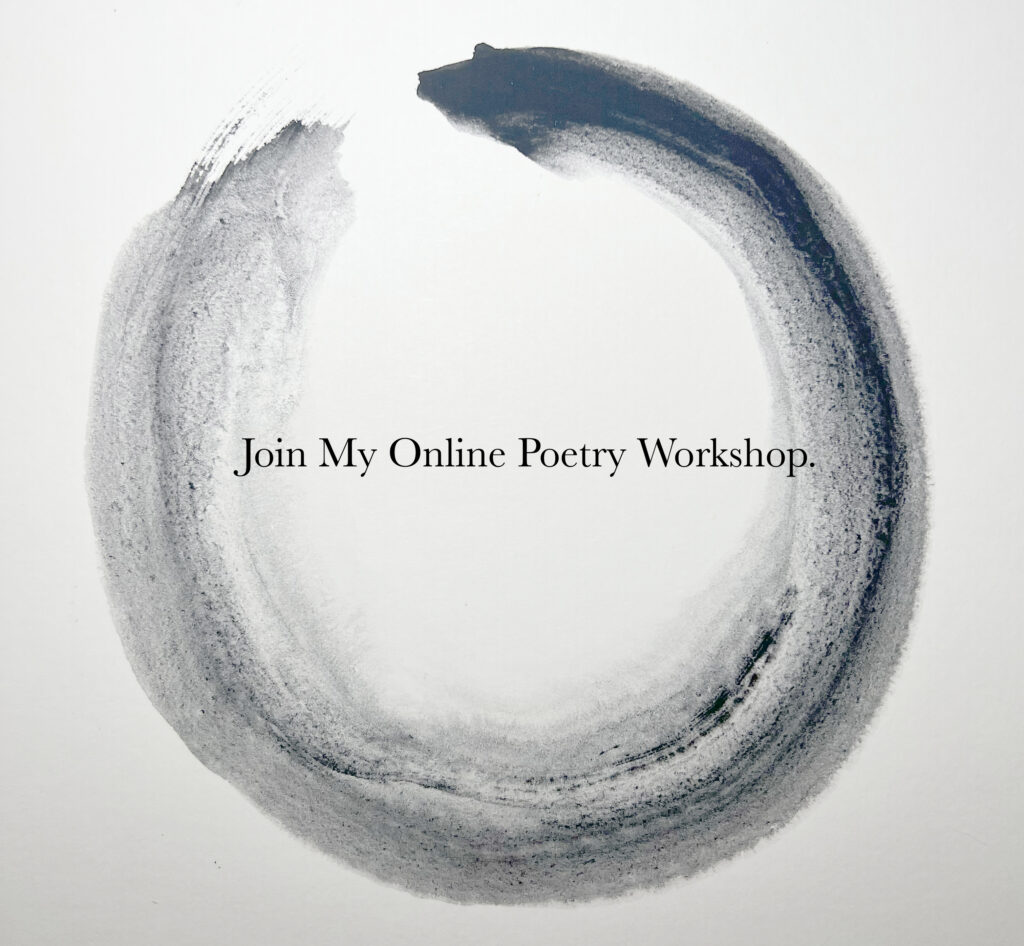Finding the right mentor can often mean the difference between success and failure. You’re just more likely to become the best in your field when you are mentored by the best in your field. I’ve been lucky, at various points in my life, to meet the right people at the right time, people who have, one way or another, pointed me in the right direction. I recently finished reading Maria Konnikova’s The Biggest Bluff, and one of the most insightful moments in the book was when she revealed how she managed to get Erik Seidel, a world-champion poker player, to mentor her. How did she manage to convince the best of the best in the field to help her out? I think her story is instructive.
Konnikova had something to offer, an “ace in the hole,” as it were. Konnikova knew she wanted to write a book about psychology and poker and she wanted Seidel to help her. She used her experience as a journalist to get an interview. But she needed more than that. Konnikova happened to have an unpublished study “on poker tells.” She gave Seidel the paper, promised him she wouldn’t show it to anyone else, and “a partnership” was “born.” Most importantly, Konnikova doesn’t get all her learning from Seidel alone, despite his excellent pedigree. Rather, she taps into Seidel’s extensive network and learns from the people she encounters along the way.
In The Biggest Bluff, Konnikova keeps returning to the importance of paying attention. She explains that people often fail to take into account the changing information the world provides, opting instead to keep doing things the way they did before, even if it’s not working anymore. Research in decision-making reveals that we overestimate how much control we have over events over which we have no control and we often base our decisions on our first snap-judgement assessment of a situation rather than take into account the changing information the world provides. In study after study, in poker and in life “people failed to see what the world was telling them when the message wasn’t one they wanted to hear.” The most important lessons Seidel teaches Konnikova involves trusting her own intuition, learning how to think critically, and learning how to ask “why.”
What does all this have to do with mentorship? A good mentor doesn’t always give you all the answers, but shows you how to live, act, and work, often through example. Paying close attention to the successful people around us can teach us a great deal, even if we are not being actively “mentored.” Those people doing what you want to be doing, living the life you want to live? Find out what they are doing. Pay attention. Copy them.
Active mentorship can provide us with much needed feedback. Konnikova writes: “you need a way of testing your thought process.” Feedback is essential. “It’s easy to have an illusion of skill when you’re not immediately called out on it through feedback.” Dan Harrington, another poker expert tells Konnikova, “Until you go through a month of everything going wrong, you won’t know whether you have what it takes.” But sometimes, the failure that comes from being lost without a mentor can also be your best teacher. Failure is the best feedback. “The benefit of failure is an objectivity that success simply cannot offer.” Learning to “lose with grace” is the difference between the person who has a shot of success and the person who quits. The successful person doesn’t take failure personally. Perhaps the people who find mentors fail at finding mentors for a long time first.
The learning process requires incremental gains. If you try to move too far too fast you’ll fail miserably without gaining the lessons required, to work at a level that pushes you, but doesn’t annihilate you. And all along the way, critical thinking is the most important skill you have. Algorithms can only get you so far in games and situations that involve degrees of uncertainty and the vagaries of human life. Life is less about applying a series of steps to a given problem, but having a process of critical thinking to respond flexibly to the change and uncertainty life throws your way. Creativity is an essential skill. “The point is winning over the long term—and winning as much… as you possibly can with your best hands, all the whole losing as little as possible with your worst.” This is true in everything.

Here are a few more things to keep in mind when embarking on the learning process, whether alone or with a mentor:
- There are three levels of knowledge. There is the novice level, when you know nothing. Knowing nothing can be an advantage; you haven’t developed any ingrained bad habits, and don’t have the bias of thinking you know more than you do. You have beginner’s mind. You know you know nothing. Then, there’s proficiency, where you’re decently good, but sometimes you can forget how complicated the whole thing is. You might think you know more than you know. The key to anything in life is knowing what you don’t know. When I was a rock climber, the most dangerous climbers weren’t the beginners nor the experts. They were the proficient climbers who knew just enough to push themselves to make dangerous decisions. This is known as the Dunning-Kruger effect: “the more incompetent you are, the less you aware of your incompetence.” And then there’s expertise. The expert knows what she doesn’t know, knows the depths and the nuances of mastery. The expert isn’t deluded about the sheer skill required for true mastery. Konnikova writes: “True skill is knowing your own limits.” This means that the novice has an advantage when dealing with people who are proficient. It can be summed up like this: take no shit.
- Facing a problem? Reframe the problem. The way you think about something changes the way you talk about it. The way you talk about something frames the way you think about it. The way you talk and think about something frames the actions you take. The actions you take frame your life. “If you think of yourself instead as an almost-victor who thought correctly and did everything possible but was foiled by crap variance? No matter—you’ll have other opportunities…” So what can you do? You can’t control the cards, but you can control the decision, Konnikova explains.
- Don’t settle. When Konnikova starts winning small cash prizes at the tournaments, her mentors tell her she can do better. They want her to go for the win, not for the consolation cash prize. This kind of thinking forces her to re-evaluate her approach to other things in life. “Do I go for the min cash in my life decisions, holding on for the safer sure thing rather than taking more risk for the more uncertain but ultimately more attractive option? Do I lack gamble in my life?” Konnikova ultimately doesn’t settle. When she plays the World Series of Poker, she doesn’t opt in to the women’s tournament (a much smaller field, with a lower cash bar for entry); she goes all in to the game with the $10,000 entry. How many times have I held myself back, not going all in for the big time out of fear?
- Ask why. The trick to winning, Konnikova finds, is to make sure that the other players’ stories add up. She’s a writer. Each game of poker is a story. If the story doesn’t add up; if a player’s actions somehow don’t accord with reality, something must be amiss. There’s a narrative in everything. The trick is finding it, analyzing it, and mastering it.
- “Know what brought you to the table to begin with.” Is it glory? Attention? Curiosity? Konnikova explains: “As you dive into a new undertaking, it’s easy to lose perspective and, in the process, lose part of yourself and part of your reason for doing what you’re doing.”
- Bird by bird. Anne Lamott’s Bird by Bird, a beautiful book about the writing process, is based on a story Lamott tells about her little brother. After procrastinating to write a big project about birds, he finds himself overwhelmed the night before, crying. Lamott’s dad told her brother to remain calm, and just take it bird by bird. This strategy can be applied to anything we do. Want to write a book? Take it chapter by chapter, section by section, paragraph by paragraph, sentence by sentence. Want to train your dog? Start with small tricks, like sit. Bird by bird.
- Luck exists. Sometimes people work really hard, and nothing happens (and sometimes people who don’t work at all find success). Sometimes you spend a decade writing the book and no one wants to read it. Sometimes you try to climb the mountain and the week you set aside to do it, an avalanche destroys the route, or a storm hits, ruining your bid for the summit. Agency can only take us so far. Luck plays a role. Skill isn’t sufficient for success. Every great success story can go the other way. How many great authors wrote the Great American Novel that ended up in a drawer? You can only acknowledge that you tried your best. Konnikova writes: “The most we can do is learn to control what we can—our thinking, our decision process, our reactions.” She quotes Epictetus: “Things in our control are opinion, pursuit, desire, aversion, and, in a word, whatever are our own actions. Things not in our control are body, property, reputation, command, and, in one word, whatever are not our own actions.”
- Take care of yourself. In striving to be your best, you cannot be your best if you don’t rest. It is important to take time for self-care and reflection.
- Miracles Happen; Disasters Do Too. Konnikova writes: “The ‘one chance in a million’ takes place every second…If bizarre coincidences and one-off events didn’t happen—well, that would be the truly remarkable thing.” Is there even a word for the “one chance in a million”? In fact, there is a term. I looked it up. Littlewood’s Law holds that once every month we can expect to see an event with a chance of one in a million. Play enough games of poker, and you’ll see a royal flush. Live long enough, and you’ll experience more than a few miracles. You’ll also experience a few disasters. The micromort is the unit of measurement that measures the chances of dying in a given endeavor. Getting eaten by a shark while surfing has a micromort of 0.3. When it comes to surfing, the micromorts balance out the miracles. This helps, somehow.
There’s more to Konnikova’s The Biggest Bluff than just poker. Read this book. Sometimes books can be good mentors, too.

About the Writer
Janice Greenwood is a writer, surfer, and poet. She holds an M.F.A. in poetry and creative writing from Columbia University.
